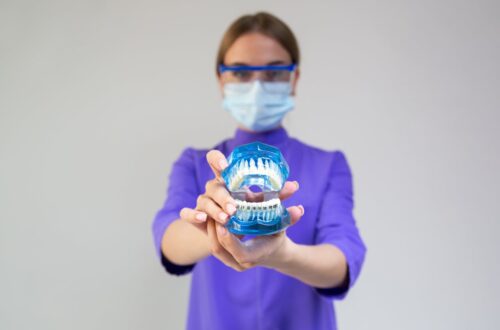There aren’t studies yet on how e-cigarette aerosol affects others, but it may be similar to secondhand smoke. It contains harmful chemicals like nicotine, ultra-fine particles, and volatile gases like acrolein. It also includes the chemical diacetyl, which can cause popcorn lung, and metals such as nickel, zinc, and lead.
Removing Smoke Residue
Whether you smoke or not, your house and car will likely be covered in nicotine and tar residue that lingers on surfaces. It is essential to regularly clean these surfaces to prevent exposure to these harmful components.
Cigarette tar and nicotine soak into upholstery, carpeting, drywall, wood cabinets, clothing, and other fabrics. Regular cleaning of these surfaces removes the odor and prevents further damage.
If you have cloth upholstery or carpeting in your home and want to eliminate the odor, sprinkle a thick layer of baking soda on the area and let it sit for a few hours. Then vacuum the baking soda up and wipe down the surfaces. Repeat as needed until you are satisfied that the odor is gone.
White vinegar can also be used to deodorize a room or vehicle. An open container of white vinegar left overnight in a car will absorb the odor and leave behind a mild vinegar scent that will dissipate within a few hours.
The best way to reduce secondhand vape exposure is to quit smoking and ask others not to vape in your home or car. This will significantly minimize the amount of nicotine and other toxic chemicals that can be absorbed into your body and cause adverse health effects. If you are not ready to quit, minimizing your exposure by regularly cleaning all surfaces in your home and car will help.
Telling Others
When people smoke or vape, those near them also inhale these chemicals. This is called secondhand vape exposure. It’s been found to cause various health problems, from respiratory tract irritation to asthma symptoms to cancer.
E-cigarettes are different than cigarettes because they don’t burn tobacco and emit tar or carbon monoxide, but aerosol from these devices does contain harmful metals and chemicals. This includes propylene glycol and glycerin, which can worsen the breathing of people with asthma. They can also contain nicotine, which is addictive. Some flavorings can be irritants to the respiratory tract, too.
The problem with secondhand aerosol from e-cigarettes is that it can hang around in indoor spaces for quite some time. It can settle on walls, floors, furniture, drapes, clothing, and other surfaces. It can then react with those materials to create other chemicals and release them back into the air. Ventilation, filtration, and other air-cleaning techniques can reduce these chemicals but not eliminate them.
As more and more teens start using e-cigarettes, parents need to help their kids understand the risks of this behavior. Explain that smoking and vaping are not healthy for anyone, especially children. Encourage them to avoid hanging out with friends who smoke or vape; if they have to be in their presence while someone else is doing this, ask them to vape outdoors.
Cleaning Your Home
Smoking or vaping indoors will leave behind a residue; even after the air clears, that residue can remain in your home. The residue can get on surfaces like walls and windows and clings to fabrics, carpeting, drapes, bedding, clothing, and other objects. It can then react with those surfaces to create other chemicals and release them into the air. This process is called third-hand exposure, and it can harm you and your family members.
Secondhand smoke contains thousands of toxic chemicals and lingers in the air for hours, harming your lungs and making you feel sick. Third-hand vape can do the same and damage your DNA, leading to long-term health problems.
There isn’t much research on how harmful the vapor is, but there is evidence that it harms nonsmokers. It can contain nicotine and ultra-fine particles that may cause cardiovascular disease, and it has chemicals like formaldehyde, which can irritate your lungs and make breathing difficult.
The best thing to do is keep e-cigarettes, devices, and refills locked away, just as cleaning products, knives, or other dangerous items. If someone does vape inside your home, politely ask them to go outside. This can prevent them from exposing their kids to secondhand vape aerosol and help them develop healthy lungs.
Wearing a Jacket
Those who smoke and use vape know that their fumes send pollutants into the air, which can harm bystanders. It’s still unclear exactly how these chemicals affect the lungs long-term, but there is some evidence that they can cause respiratory issues for nonsmokers. Moreover, the fumes can also damage cilia, which help clear mucus from the lungs. These damages can trigger asthma symptoms and even increase the severity of existing ones.
The good news is that the risk drops once someone stops smoking or vaping. Unfortunately, that doesn’t mean it goes away completely. The components of the aerosol can settle on surfaces, such as carpets and furniture. When kids or pets touch these surfaces, they can inhale the toxins and irritate their lungs. Keeping your house and car smoke-free is essential to protect children, infants, older people, and those with chronic lung diseases.
Using a jacket is one way to do so. Heated jackets offer insulated warmth that helps you stay out longer and breathe fresher air. These coats are available in many styles and colors, so you can choose one that matches your style. They are also very functional, offering protection from abrasions, intense impacts, and punctures. In addition, they can add a great deal of style to an outfit.






